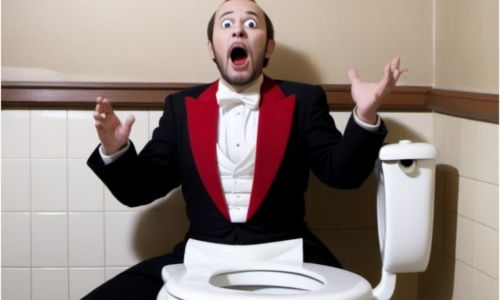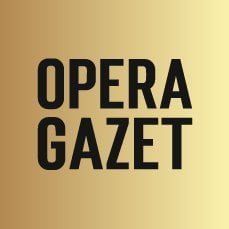Opera. Entertainment for tourists?
If opera, during the twentieth century, used to be identified almost exclusively with musical performers, especially singers, in the new millennium the figure of the director/set designer has gradually emerged, often attracting the attention of audiences and critics. The great interest in the directing and staging aspects of current productions is due, at least in part, to the innovative (and not always very enlightening) “keys to interpretation” and related reinterpretations that have been the subject of expert and passionate debate. In reality, however, this emphasis on elements that were considered secondary in the past, conceals a real problem that, in our opinion, affects the future of opera itself.
Aspects of secondary importance
Let’s start in the right order: it is almost self-evident that a work is first and foremost a musical fact. This is confirmed by the fact that (without depriving librettists of the credit they deserve) the main authors of operas are musicians, and that opera is mainly discussed in the context of the history of music. As proof of this, we can also observe that it is possible to perform an opera in concert form (or in semi-scenic form), whereas the opposite would make no sense, i.e. a production without the musical element. In short, we can easily see how much of the value of an opera lies in its musical component, and only to a lesser extent in its staging. So why is attention so often focused on aspects that should be (and have been) of secondary importance? In other words, why are the elements of interest and novelty mainly relegated to the staging component?

In our opinion, the answer lies in the drastic decrease in the creation of new works and the consequent reduction in the diversity of the works that are generally presented. In fact, the revival of an increasingly limited repertoire in favour of the “usual” successful titles can only weaken the interest of critics and the public, who are forced to turn their attention to the only elements of “innovation”, which essentially consist of the more or less (in)sensible reinterpretations made by modern directors.
Perhaps it is worth quantifying the previous statements with some figures, taking as a reference the productions of the Teatro dell’Opera di Roma in the last decade and comparing them with those of about a century earlier [1]. It is worth noting that the programmes presented by the Teatro dell’Opera di Roma are, on the whole, among the most open both to new compositions and to titles that are not necessarily of “great appeal”, although always of undoubted artistic value.
Tosca # 1
74 different operas were proposed, by 35 composers, including 3 contemporary ones (set to music by Battistelli, Colasanti and Montalti). The record goes, as expected, to Verdi with 13 different titles, followed by Puccini (8), Donizetti (6) and Mozart (5). However, if we also look at the number of different productions of the same opera over the years, we find Verdi and Puccini in first place with 22 productions each, followed by Donizetti, Mozart and Rossini with 7. The most performed opera is Tosca (10 productions), followed by La traviata (5) and Turandot (4).
Among the less popular composers, we should at least mention Auber, Berg, Britten, Janáček, Poulenc, Prokofiev and Ravel.
Tosca, most performed
On the other hand, if we look at the productions offered by the same theatre in one decade of the first half of the last century, we find 165 works by 68 different composers, 20 of which were world premieres. Among the latter, we recall, by way of example, the works of Alfano (Cyrano), Casella (La donna serpente), Malipiero ( La favola del figlio cambiato ), Pizzetti ( Lo Straniero ), Respighi ( La fiamma ), Wolf-Ferrari ( La vedova scaltra ), Zandonai ( La farsa amorosa ) [2]. The record for the greatest number of operas represented is still held by Verdi (12 different operas), followed by Puccini and Mascagni (9) and Wagner (8). The most present opera is Aida (8 editions), followed by Lucia di Lammermoor , Carmen and La traviata (7), and again Cavalleria rusticana, La forza del Destino, Il Trovatore and Turandot (6). We can also see that among the many titles that are almost forgotten today, we find works such as Loreley (Catalani), Ariadne und Bluebeard (Dukas), Martha (Flotow), Il Guarany (Gomez), Sadko (Rimsky-Korsakov), to name but a few.
Wolf-Ferrari, La vedova scaltra
The “creativity” of direction
The above comparison leaves no room for doubt: despite the excellent programming generally adopted by the Teatro dell’Opera di Roma, the absolute number of works and authors represented has in fact been halved, while world premieres have almost disappeared. There is not enough space here to go into the many reasons for this drastic reduction, which are unfortunately not limited to the world of opera, but it is a clear fact to reflect on. The lack of variety and novelty is now effectively compensated by the “creativity” of direction and staging. In a previous article, we pointed out that the lack of truly original works was a discouraging sign for the sector. It is legitimate to ask to what extent this trend can realistically guarantee a distant future for opera, once the interest in these revivals (even the most unthinkable) disappears. From this point of view, unfortunately, the genre is increasingly in danger of being reduced to “entertainment for tourists”, a category that already represents a significant part of the audience, especially in arenas. This is a sad prospect, considering that in 2023 the art of opera will be proclaimed an “Intangible Heritage of Humanity” by UNESCO.

No great expert myself, but quite enthusiastic. Isn’t the approach taken on opera of a rather limited scope? The author hardly mentions the amazing revival of Baroque opera by composers like Hasse, Handel, Vinci, Cavalli. Not to mention the wonderful Donizetti sound in the redescovered Fausto by Louise Bertin. Couldn’t it be that operahouses like to play it safe, just like restaurants predominantly offering similar menus or publishers all publishing the same subjects. Has the market philosophy taken over? Personally very enthusiastic about the rediscovered Fausto, but which theatre thinks “out of the box office” en puts it on its… Read more »